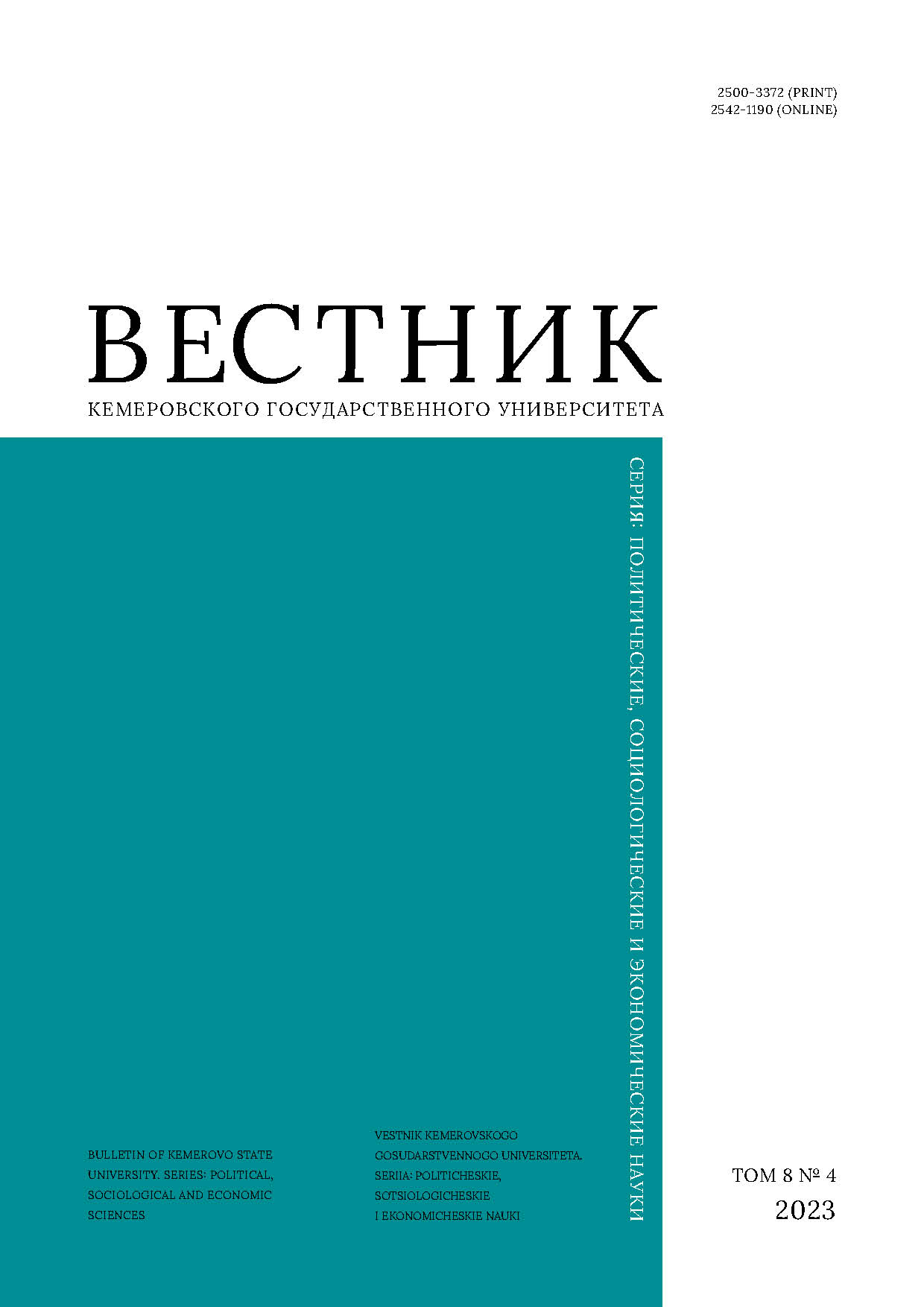Moscow, Russian Federation
The number and mobility of international student is a sign of quality and prestige for universities and educational institutions. International student mobility impacts different aspects of global society, including socioeconomic, political, and cultural environment, science, and technology. In order to compete in the global educational environment and attract international students, Russia has been offering a wide range of programs where the English is the language of instruction. This paper offers a descriptive research and uses a systematic approach to analyze monetary gains of Russia brought in by international students. The research uses secondary data provided by official international organizations. The results show that 64.5% of the international students who studied full-time in Russian universities in academic year 2017 / 2018 were self-financed. Among the top 6 destination countries for international students, Russia spends the lowest percentage of GDP on education, has the lowest economic contribution of international students to GDP and total economic contribution of international students. International students in Russia spent around $637.5 million on tuition and $1,632.7 million on household expenses during the period of study. The aggregate income from providing Russian educational services to foreign citizens is $2,270.2 million.
higher education, migration, students, foreign students, monetary impact, economic impact, Russia
1. Green M. F. Measuring and assessing internationalization. NAFSA, Association of International Educators, 2012. URL: https://goglobal.fiu.edu/_assets/docs/m-green-2012-measuring_and_assessing_internationalization.pdf (accessed 19 May 2023).
2. Hazelkorn E. Rankings and the reshaping of higher education. The battle for world-class excellence. L.: Palgrave Macmillan, 2015, 259. https://doi.org/10.1057/9780230306394
3. De Moor B., Henderkx P. International curricula and student mobility. LERU: Advice Paper, 2013, (12). URL: https://www.leru.org/files/International-Curricula-and-Student-Mobility-Full-paper.pdf (accessed 19 May 2023).
4. Docquier F., Lohest O., Marfouk A. Brain drain in developing countries. The World Bank Economic Review, 2007, 21(2): 193-218. https://doi.org/10.1093/wber/lhm008
5. Ryazantsev S. V., Rostovskaya T. K., Skorobogatova V. I., Bezverbny V. A. International academic mobility in Russia: trends, types, state stimulation. Ekonomika regiona, 2019, 15(2): 420-435. (In Russ.)
6. Bleaney M. F., Binks M. R., Greenaway D., Reed G. V., Whynes D. K. What does a University add to its local economy? Applied Economics, 1992, 24(3): 305-311. https://doi.org/10.1080/00036849200000143
7. Schultz T. W. Capital formation and education. Journal of Political Economy, 1960, 68(6): 571-583. https://doi.org/10.1086/258393
8. Blanco-Portela N., R-Pertierra L., Benayas J., Lozano R. Sustainability leaders’ perceptions on the drivers for and the barriers to the integration of sustainability in Latin American higher education institutions. Sustainability, 2018, 10(8). https://doi.org/10.3390/su10082954
9. Rossi F., Goglio V. Satellite university campuses and economic development in peripheral regions. Studies in Higher Education, 2020, 45(1): 34-54. https://doi.org/10.1080/03075079.2018.1506917
10. Ghani N. A., Teo P.-C., Ho T. C. F., Choo L. S., Kelana B. W. Y., Adam S., Ramliy M. K. Bibliometric analysis of global research trends on higher education internationalization using Scopus database: towards sustainability of higher education institutions. Sustainability, 2022, 14(14). https://doi.org/10.3390/su14148810
11. Altbach P. G., De Wit H. Internationalization and global tension: lessons from history. Journal of Studies in International Education, 2015, 19(1): 4-10. https://doi.org/10.1177/1028315314564734
12. Knight J. Internationalization remodeled: definitions, rationales and approaches. Journal of Studies in International Education, 2004, 8(1): 5-31. https://doi.org/10.1177/1028315303260832
13. Knight J. Education hubs: a fad, a brand, an innovation? Journal of Studies in International Education, 2011, 15(3): 221-240. https://doi.org/10.1177/1028315311398046
14. Yuan R., Li S., Yu B. Neither "local" nor "global": Chinese university students’ identity paradoxes in the internationalization of higher education. Higher Education, 2019, 77(6): 963-978. https://doi.org/10.1007/s10734-018-0313-7
15. Altbach P. G. The international imperative in higher education. Rotterdam: Sense Publishers, 2013, 198. https://doi.org/10.1007/978-94-6209-338-6
16. Mechtenberg L., Strausz R. The Bologna process: how student mobility affects multi-cultural skills and educational quality. International Tax and Public Finance, 2008, 15(2): 109-130. https://doi.org/10.1007/s10797-007-9040-1
17. Arefiev A. L. Russian language and Russian speaking education in the Republic of Lithuania. Alma Mater (Vestnik Vysshey Shkoly), 2020, (8): 70-84. (In Russ.)
18. Phang S. L. Factors influencing international students’ study destination decision abroad. Gothenburg, 2013. URL: https://gupea.ub.gu.se/bitstream/2077/32136/1/gupea_2077_32136_1.pdf (accessed 19 May 2023).
19. Soo K. T., Elliott C. Does price matter? Overseas students in UK higher education. Economics of Education Review, 2008, 29(4): 553-565. https://doi.org/10.1016/j.econedurev.2009.10.016
20. Docquier F., Turati R., Valette J., Vasilakis C. Birthplace diversity and economic growth: evidence from the US states in the Post-World War II period. Journal of Economic Geography, 2020, 20(2): 321-354. https://doi.org/10.1093/jeg/lbz016
21. Levent F. The economic impacts of international student mobility in the globalization process. International Journal of Human Sciences, 2016, 13(3): 3853-3870. https://doi.org/10.14687/jhs.v13i3.3877
22. Chang D.-F., Chang A. Detecting the impacts of newborn babies and its effect on elementary school enrollment. ICIC Express Letters, Part B: Applications, 2021, 12(6): 499-506. https://doi.org/10.24507/icicelb.12.06.499
23. Chang D.-F. Implementing internationalization policy in higher education explained by regulatory control in neoliberal times. Asia Pacific Education Review, 2015, 16(4): 603-612. http://dx.doi.org/10.1007/s12564-015-9407-4
24. Siddiq F., Baroni J., Lye J, Nethercote W. C. E. The economic impact of post-secondary international students in Atlantic Canada. Dalhousie University, School of Public Administration, 2010, 118.
25. Nikolaev V. K. Exporting Russian higher education in the conditions of a new reality. Vysshee obrazovanie v Rossii, 2022, 31(2): 149-166. (In Russ.)
26. Endovitsky D. A., Korotkikh V. V., Voronova M. V. Competitiveness of Russian universities in the global system of higher education: quantitative analysis. Vysshee obrazovanie v Rossii, 2020, 29(2): 9-26. (In Russ.)
27. Ryazantsev S. V., Pismennaya E. E. Effects of the foreign students’ migration in Russia. Narodonaselenie, 2009, (2): 69-79. (In Russ.)
28. Ainalieva A. R. The place of foreign students in the Russian higher education system. The world of science, culture and education, 2016, (6): 9-11. (In Russ.)



















